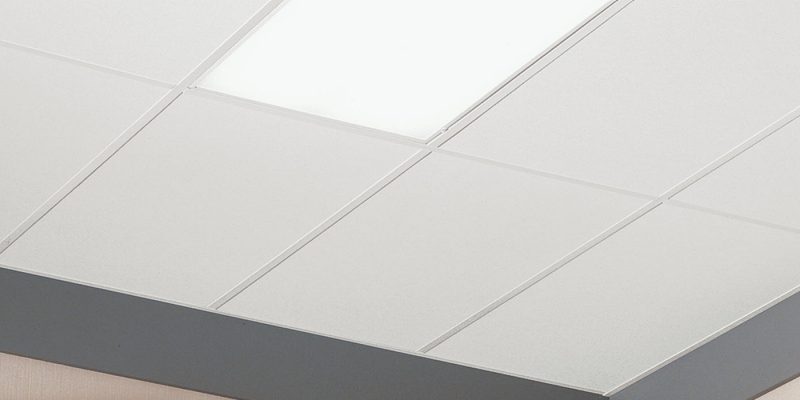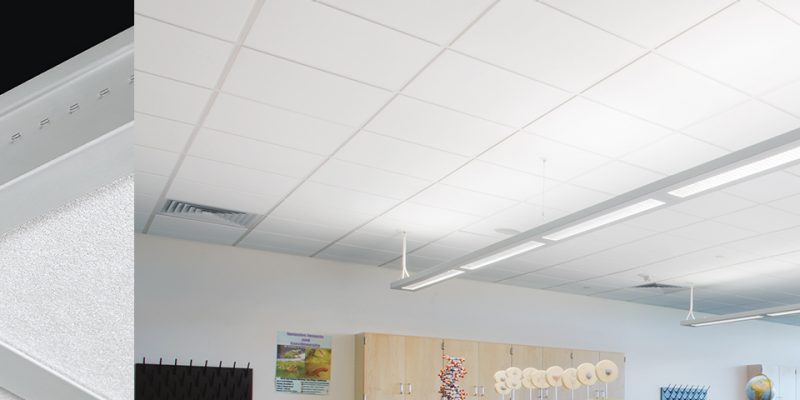When it comes to designing and maintaining a clean room, every detail matters—especially the ceiling tiles. Clean room ceiling tiles are not just another building material; they play a crucial role in maintaining the sterile environment required in various industries, such as pharmaceuticals, biotechnology, electronics, and healthcare. In this comprehensive guide, we will explore everything you need to know about clean room ceiling tile, from their importance and types to installation and maintenance tips.

Understanding
Clean room environments are highly controlled spaces where the presence of airborne particles, microorganisms, and other contaminants must be minimized. The ceiling in a clean room is a critical component that directly impacts the room’s ability to maintain strict cleanliness standards. Here’s why clean room ceiling tiles are so important:
1. Contamination Control
One of the primary purposes of clean room ceiling tiles is to control contamination. These tiles are designed to prevent the shedding of particles, which can introduce contaminants into the clean room environment. The tiles are typically made from non-porous materials that do not harbor dust, microbes, or other particulates, ensuring a sterile environment.
2. Airflow Management
Clean room ceiling tiles play a vital role in the proper distribution of air within the clean room. Many clean rooms use ceiling-mounted HEPA (High-Efficiency Particulate Air) filters to provide a constant flow of clean air. The design and installation of the ceiling tiles must support this airflow, ensuring that clean air circulates effectively while maintaining the room’s pressurization.
3. Durability and Chemical Resistance
In clean room settings, the ceiling tiles must withstand regular cleaning with strong disinfectants and chemicals without degrading or losing their structural integrity. Clean room ceiling tiles are engineered to resist corrosion, staining, and chemical reactions, ensuring long-lasting performance.
4. Ease of Maintenance
Because clean rooms require frequent cleaning and maintenance, the ceiling tiles must be easy to clean and maintain. Tiles that are resistant to stains and chemical damage can significantly reduce the time and effort required to maintain a clean room, helping to minimize downtime and maintain high productivity.
Types of Clean Room Ceiling Tiles
There are several types of clean room ceiling tiles available, each designed to meet specific requirements depending on the level of cleanliness needed. Understanding these different types will help you choose the right tiles for your clean room environment.
1. Vinyl-Faced Gypsum Ceiling Tiles
Vinyl-faced gypsum tiles are among the most common types of clean room ceiling tiles. These tiles consist of a gypsum core covered with a durable vinyl surface, which is non-porous and easy to clean. The vinyl surface prevents dust and particles from accumulating, making it ideal for environments where cleanliness is critical. These tiles are often used in pharmaceutical and biotechnology clean rooms.
Read too: Bathroom Flooded Through the Ceiling: A Comprehensive Guide
2. Aluminum Ceiling Tiles
Aluminum clean room ceiling tiles are known for their durability and resistance to corrosion. They are lightweight, easy to install, and can be used in environments where chemical resistance is a priority. Aluminum tiles are also non-porous and do not support the growth of mold or bacteria, making them suitable for clean rooms in industries such as electronics and healthcare.
3. Fiberglass Ceiling Tiles
Fiberglass tiles are designed for clean rooms where superior sound absorption is required, in addition to cleanliness. These tiles have a fiberglass core that provides excellent acoustic performance, reducing noise levels in the clean room. The tiles are typically covered with a smooth, cleanable surface that resists dust and particles. Fiberglass tiles are commonly used in laboratories and research facilities.
4. PVC Ceiling Tiles
PVC (Polyvinyl Chloride) ceiling tiles are another popular choice for clean rooms. These tiles are completely non-porous, resistant to chemicals, and easy to clean, making them ideal for environments where frequent sanitization is required. PVC tiles are also lightweight and can be installed quickly, making them a cost-effective option for many clean room applications.
Choosing the Right Clean Room Ceiling Tiles
Selecting the right clean room ceiling tiles involves considering several factors, including the specific requirements of your clean room, the level of cleanliness needed, and the environmental conditions. Here are some key factors to consider:
1. Clean Room Classification
Clean rooms are classified based on the number of particles per cubic meter of air, with different industries requiring different levels of cleanliness. For example, an ISO Class 5 clean room requires fewer than 3,520 particles per cubic meter, while an ISO Class 8 clean room allows up to 3,520,000 particles. The classification of your clean room will determine the type of ceiling tiles you need. Higher classifications require more stringent contamination controls, meaning you will need tiles that are highly resistant to particle shedding and easy to sanitize.
2. Environmental Conditions
Consider the environmental conditions within the clean room, such as temperature, humidity, and chemical exposure. If your clean room operates in a high-humidity environment, you’ll need ceiling tiles that are resistant to moisture and mold. In environments where harsh chemicals are used, select tiles that can withstand frequent exposure to these substances without degrading.
3. Ease of Installation
The installation process for clean room ceiling tiles should be straightforward and efficient. Look for tiles that are easy to handle and can be installed with minimal disruption to the clean room environment. Some tiles are designed with interlocking edges or other features that simplify installation and ensure a tight, secure fit.
4. Maintenance Requirements
Clean room ceiling tiles should be low-maintenance, requiring only routine cleaning to maintain their appearance and functionality. Consider tiles that are resistant to staining and easy to wipe down, as this will reduce the time and effort needed for maintenance.
Installation Tips for Clean Room Ceiling Tiles
Proper installation of clean room ceiling tiles is essential for maintaining the integrity of the clean room environment. Here are some tips to ensure a successful installation:
1. Prepare the Space
Before installing clean room ceiling tiles, make sure the space is properly prepared. This includes cleaning the existing ceiling structure, ensuring that the air filtration system is functioning correctly, and verifying that all other construction activities are complete to avoid introducing contaminants.
2. Follow Manufacturer Guidelines
Always follow the manufacturer’s guidelines for installing clean room ceiling tiles. These guidelines will provide specific instructions on handling, cutting, and installing the tiles to ensure they meet the clean room’s contamination control requirements.
3. Seal All Gaps
Gaps between ceiling tiles can allow contaminants to enter the clean room. Use appropriate sealing materials to fill any gaps and ensure a tight, secure fit. This is particularly important in areas around light fixtures, air vents, and other penetrations in the ceiling.
4. Test for Integrity
After installation, it’s important to test the integrity of the ceiling to ensure it meets clean room standards. This may involve testing for air leaks, particle counts, and other factors that could compromise the clean room environment.
Maintaining Clean Room Ceiling Tiles
Maintaining clean room ceiling tiles is crucial for ensuring the ongoing cleanliness and functionality of the clean room. Here are some maintenance tips:
1. Regular Cleaning
Clean room ceiling tiles should be cleaned regularly using appropriate cleaning agents that do not damage the surface. Avoid abrasive cleaners that can scratch or degrade the tiles. Instead, use soft cloths or sponges with mild disinfectants to wipe down the tiles.
2. Routine Inspections
Conduct routine inspections of the ceiling tiles to check for any signs of damage, such as cracks, discoloration, or loose tiles. Address any issues immediately to prevent contaminants from entering the clean room.
3. Replace Damaged Tiles
If any ceiling tiles become damaged or compromised, replace them promptly. Damaged tiles can become a source of contamination, so it’s important to maintain the integrity of the clean room ceiling at all times.
Conclusion
Clean room ceiling tile are a vital component of any clean room, playing a key role in controlling contamination, managing airflow, and ensuring a sterile environment. By understanding the different types of clean room ceiling tiles, considering your clean room’s specific needs, and following best practices for installation and maintenance, you can ensure that your clean room remains a safe, clean, and efficient space for your operations. Whether you’re working in pharmaceuticals, electronics, or any other industry requiring a controlled environment, investing in high-quality clean room ceiling tiles is essential for maintaining the highest standards of cleanliness and safety.

